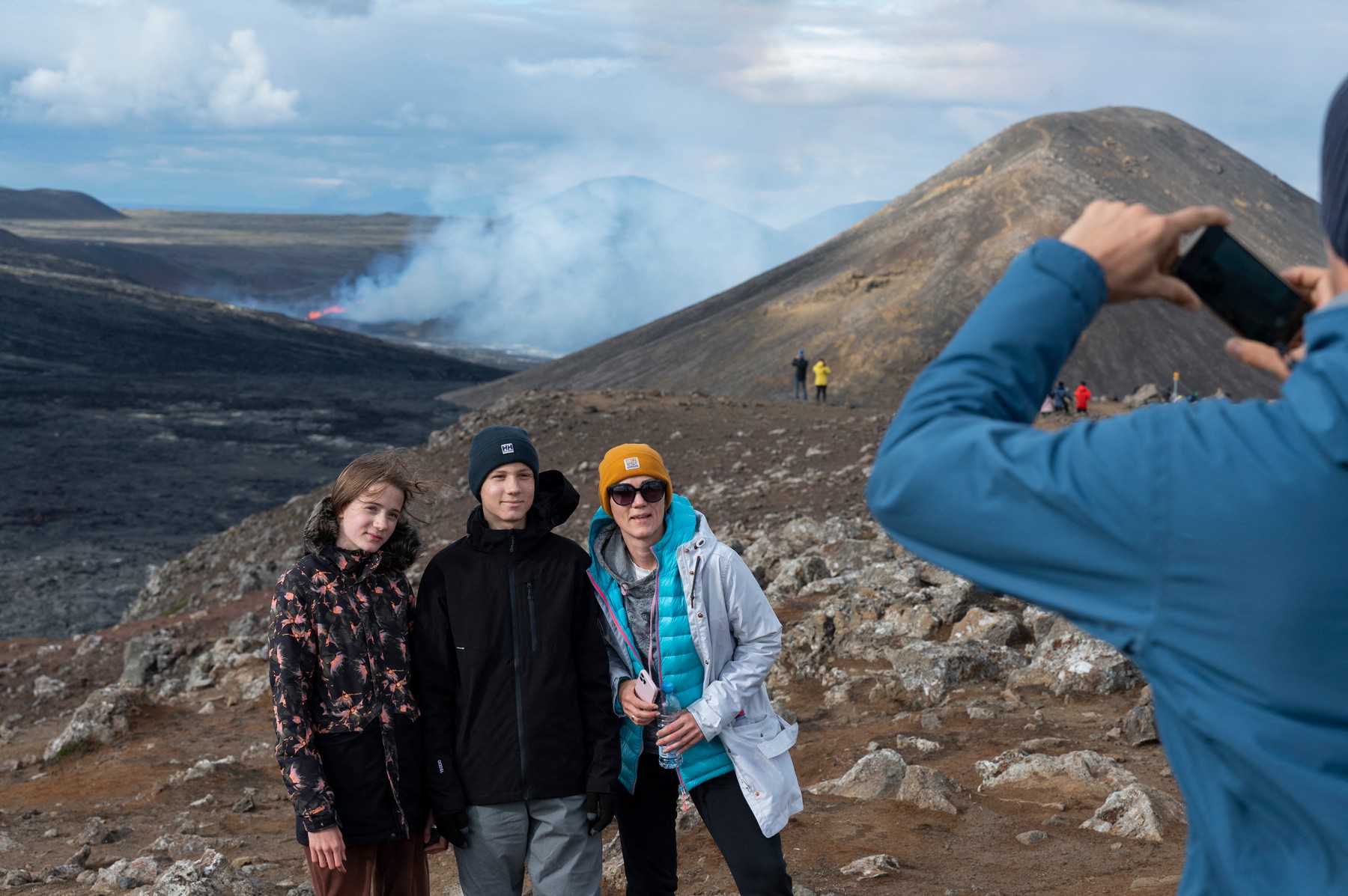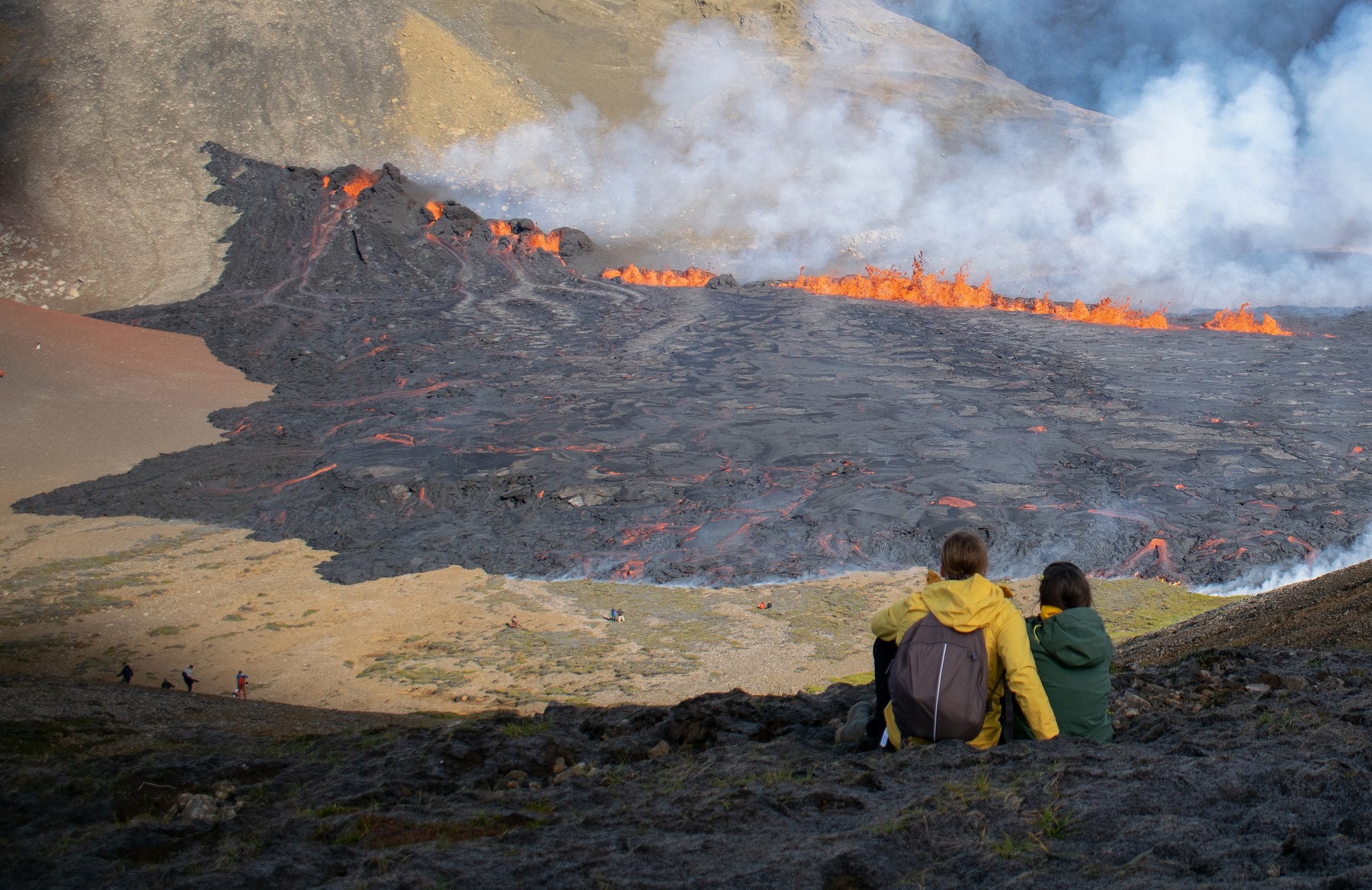
Almost 2,000 tourists arrived on Thursday in the Icelandic region, where a new volcanic eruption occurred in a crack in the earth’s crust, located at a distance of about 40 kilometers from the capital of Iceland, Reykjavik, reports AFP. Icelandic authorities on Wednesday asked the public not to visit the area of the eruption until an official risk assessment was completed.
The eruption, which began on Wednesday, occurred almost 1 kilometer from the Fagradalsfjall mountain volcano in southwest Iceland, which remained in an active eruptive phase for six months in 2021.
According to Icelandic authorities, the eruption site, located in a remote region that requires a 90-minute walk, had already attracted more than 1,830 visitors on the day the fissure appeared in the earth’s crust.

A family from Estonia came to Iceland to see the area where the new volcano erupted
Photo source: Haraldur Gudjonsson / AFP / Profimedia
Gases from volcanic eruptions can be deadly
And many inquisitive tourists were already heading there since Thursday morning.
Icelandic authorities on Wednesday asked the public not to visit the area of the eruption until an official risk assessment was completed.

People look at lava flowing at a place where a volcano recently erupted
Photo source: Jeremie RICHARD / AFP / Profimedia
But on Thursday, Civil Defense announced that only small children should stay away from the eruption zone.
Gases released during volcanic eruptions, especially sulfur dioxide, can be dangerous and even deadly.
Last year, the area of the eruption, which is easily accessible on foot, attracted more than 435,000 tourists.
Lava jets 15 meters high
The Meteorological Institute of Iceland estimated on Thursday that the length of the fissure reached 360 meters and the lava jets reached a height of 10 to 15 meters.
Lava flow recorded in the first hours of the eruption was estimated at 32 cubic meters per second, according to measurements taken Wednesday by scientists from the Institute of Earth Sciences three and a half hours after the eruption began.
This value is 4-5 times higher than that recorded at the beginning of the 2021 eruption.
“That’s why the current eruption is much stronger,” representatives of this institute said in a message published on Facebook.
Iceland is one of the most active volcanic regions
According to the Institute of Earth Sciences, lava from the new eruption covered an area of about 74,000 square meters.
Iceland has 32 active volcanic systems, the most in Europe. This country, which experiences a volcanic eruption every five years on average, is located on the Atlantic Ridge, the fault that separates the Eurasian and North American tectonic plates.
The movement of these plates is partly responsible for the seismic activity in Iceland. (Agerpress)
Source: Hot News RO
Robert is an experienced journalist who has been covering the automobile industry for over a decade. He has a deep understanding of the latest technologies and trends in the industry and is known for his thorough and in-depth reporting.